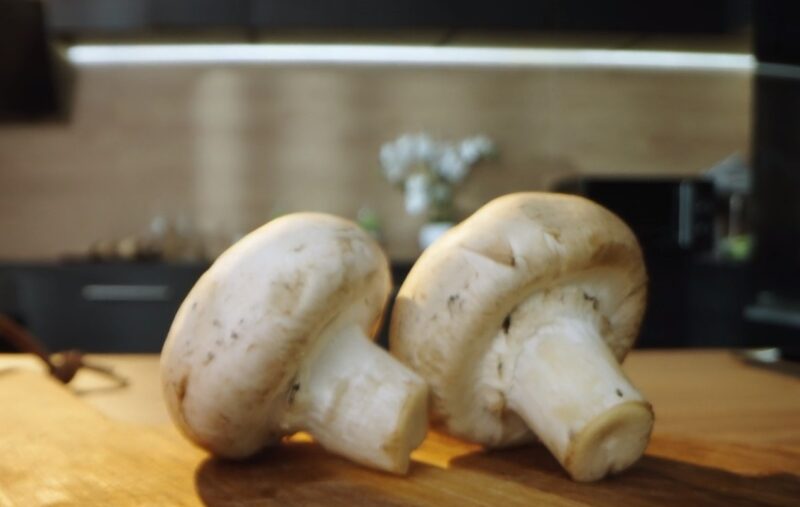Mushrooms are a popular ingredient in many dishes, but there’s often confusion about whether they can be eaten raw. While some fungi are safe to consume uncooked, others pose risks.
In this discussion, we’ll explore the safety, nutritional benefits, and potential drawbacks of eating raw mushrooms.
Key Takeaways
- Certain mushrooms like white button, cremini, portobello, and shiitake are generally safe to eat raw, but preparation methods such as cleaning and slicing are important for safety and enhancing flavor.
- Raw mushrooms contain chitin, making them tougher to digest. Cooking breaks down the cell walls, making nutrients more accessible and the mushrooms easier to digest.
- Some mushrooms, like reishi, morels, false morels, death cap, chanterelles, porcini, and honey mushrooms, are either tough to digest, potentially toxic, or unsafe when consumed raw. Cooking is necessary to make them safe or to enhance their flavors.
- Cooking methods like high-heat cooking, avoiding overcrowding in the pan, adding salt at the end, and exploring diverse cooking methods (grilling, sautéing, baking) are recommended to enhance the flavor and texture of mushrooms.
- When eating mushrooms raw, it’s important to choose edible varieties, buy from reliable sources, store them properly, clean them thoroughly, and consider blanching to kill bacteria.
Is Eating Raw Mushrooms Safe?
There are many popular mushroom varieties like button, oyster, and shiitake, that can be eaten raw. However, not all are suitable for raw consumption. Some can cause digestive issues, while others are outright dangerous.
It’s essential to know which fungi are safe to eat raw and how to prepare them:
1. White Button (Agaricus bisporus)
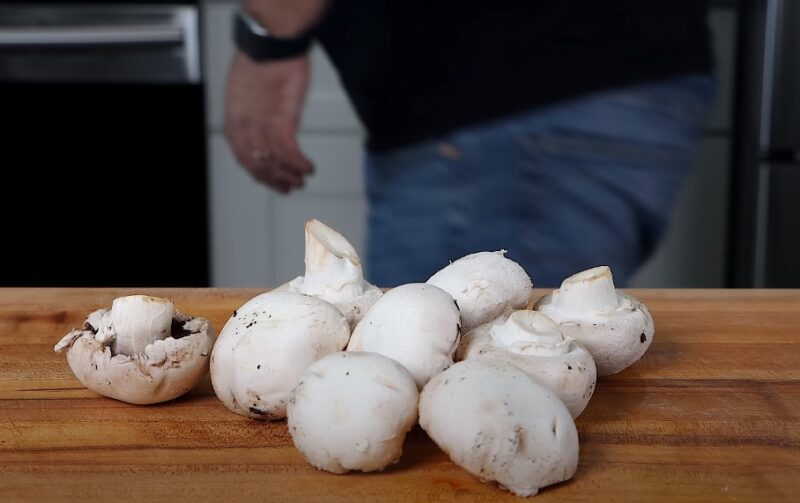
White button mushrooms are among the most common and versatile fungi available. They have a mild flavor and a crisp texture, making them an excellent addition to salads and raw dishes. To prepare these for raw consumption, start by gently rinsing them under cold water and patting them dry.
You can slice them thinly for salads or serve them whole as part of a vegetable platter. Marinating them in a light vinaigrette can also enhance their flavor for raw eating.
2. Cremini (Agaricus bisporus)
Cremini mushrooms, also known as baby bellas, are a more mature version of white button fungi, offering a slightly richer flavor. Their firmer texture holds up well in raw preparations. To prepare creminis for raw consumption, clean them as you would white button mushrooms.
They are excellent when sliced thinly and added to sandwiches or salads for an earthy flavor. For a quick appetizer, stuff them with a mixture of cream cheese, herbs, and garlic.
3. Portobello (Agaricus bisporus)
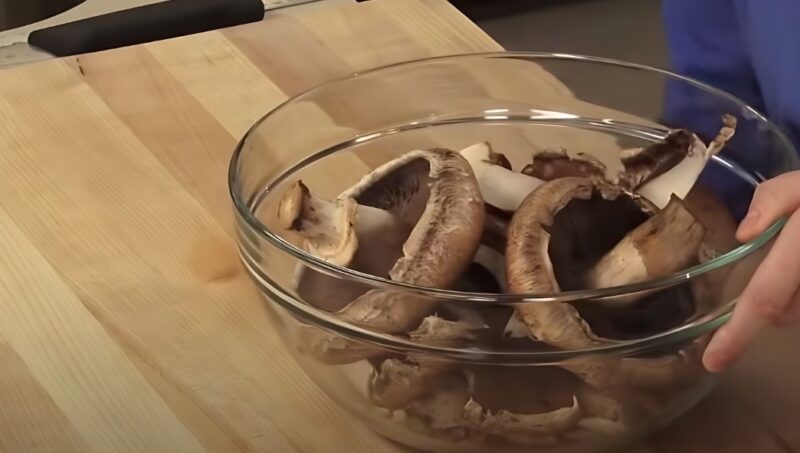
Portobello mushrooms are fully-grown cremini mushrooms and are known for their large size and meaty texture. They are a popular meat substitute in various dishes. To prepare portobellos for raw consumption, it’s important to clean them thoroughly, gently scraping out the gills with a spoon and wiping the cap with a damp cloth.
Slicing them thinly makes them a great addition to raw wraps or salads. You can also marinate them in olive oil and herbs to soften their texture and add flavor.
4. Shiitake (Lentinula edodes)
Shiitake mushrooms are known for their smoky flavor and chewy texture. While they are more commonly cooked, they can also be eaten raw, especially in Asian-inspired dishes. To prepare shiitake mushrooms for raw consumption, remove their stems, which can be tough, and rinse the caps lightly.
Slicing them thinly allows them to be used in salads, as a topping for sushi, or even in cold noodle dishes. Be cautious, as some people may have allergic reactions to raw shiitake mushrooms, so it’s advisable to try a small amount first.
5. Digestibility of Raw Fungi
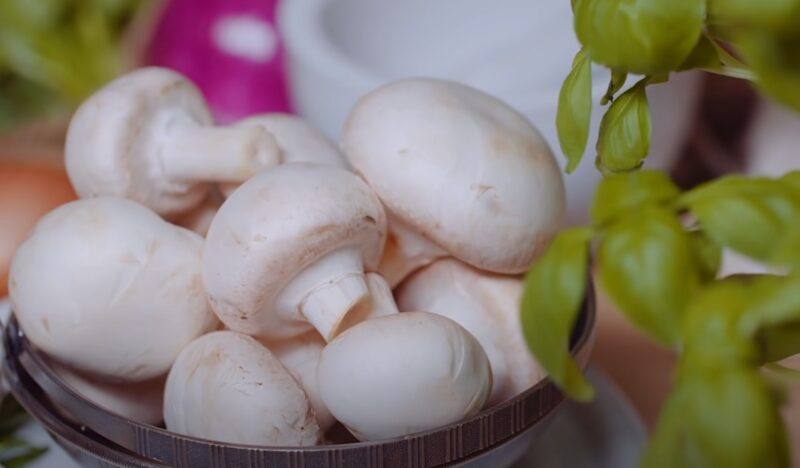
Mushrooms contain chitin, a complex sugar that forms their cell structure. In humans, chitin is broken down by enzymes called chitinases. While our bodies can handle chitin, it’s easier to digest when fungi are cooked.
Cooking breaks down the cell walls, enhancing nutrient absorption and making them more digestible.
Which Mushrooms to Avoid?
Reishi
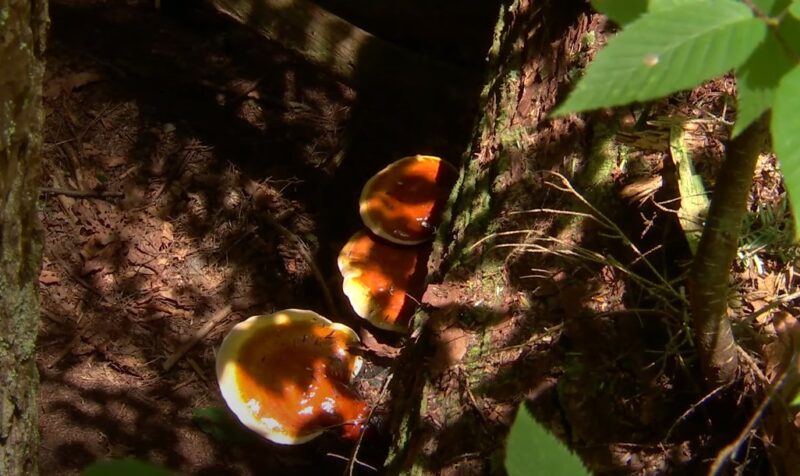
Reishi mushrooms are renowned for their medicinal properties but are not suitable for raw consumption. Their tough texture makes them difficult to digest. To enjoy their benefits, dry and powder them for use in teas or tinctures. This process extracts their beneficial compounds, making them more accessible to the body.
Reishi can also be incorporated into soups or broths after prolonged boiling, which helps in breaking down their tough cellular structure.
Morels (Morchella spp.)
Morels are a delicacy in the culinary world, but they must be cooked to be safe. Their high chitin content makes them tough and indigestible when raw. Cooking morels, especially through methods like sautéing or stewing, breaks down this chitin and releases their earthy, nutty flavor.
It’s also crucial to clean them thoroughly before cooking, as their unique shape can harbor dirt and debris.
False Morels (Gyromitra spp.)
False morels are deceptive and potentially dangerous, resembling the edible morels. They contain gyromitrin, a toxic compound that can be life-threatening. Even cooking does not render them safe, so it’s best to avoid them entirely.
If you’re foraging, it’s crucial to learn the differences between false morels and true morels to avoid accidental poisoning.
Death Cap (Amanita Phalloides)
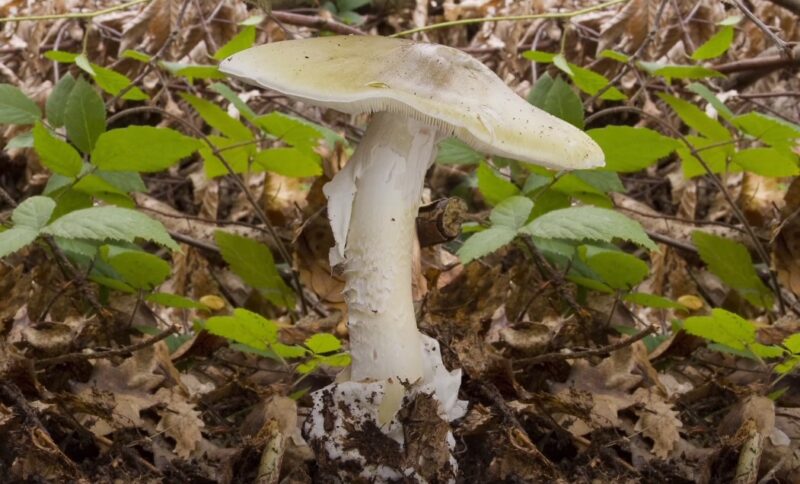
The Death Cap mushroom is one of the most poisonous mushrooms known and should never be consumed, whether raw or cooked. Just a small amount can be lethal, as it contains potent toxins that affect the liver and kidneys.
There is no known way to detoxify the Death Cap, and it should always be avoided. Its resemblance to some edible species makes it especially dangerous for foragers.
Chanterelles (Cantharellus cibarius)
Chanterelles are prized for their flavor but can cause gastrointestinal upset if eaten raw. Cooking not only mitigates this risk but also enhances their unique peppery flavor. Sautéing chanterelles in butter or oil with a bit of garlic and herbs brings out their best qualities.
It’s also important to clean them gently but thoroughly, as their ridges and folds can trap dirt.
Porcini (Boletus edulis)
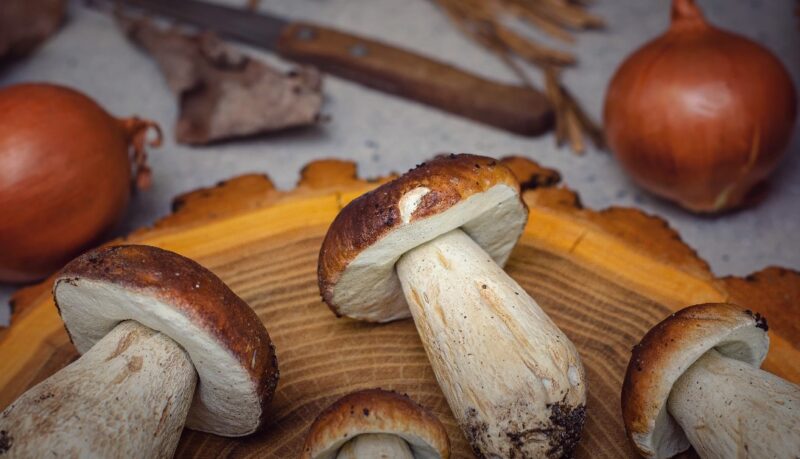
Porcini mushrooms are another variety that benefits from cooking. While not toxic when raw, they can be hard to digest and may cause discomfort. Slow cooking or sautéing porcini mushrooms brings out a rich, deep flavor, making them a favorite in Italian cuisine.
They are excellent in risottos, soups, and sauces, where their flavor can infuse into the dish.
Honey Mushrooms (Armillaria mellea)
Honey mushrooms need to be cooked to neutralize their mild toxins. These fungi are best when stewed or sautéed, which breaks down their toxins and brings out a sweet, earthy flavor. They are often used in Eastern European cuisines, particularly in hearty stews and soups.
Before cooking, clean them thoroughly and remove any tough stems.
Nutritional Comparison: Raw vs. Cooked
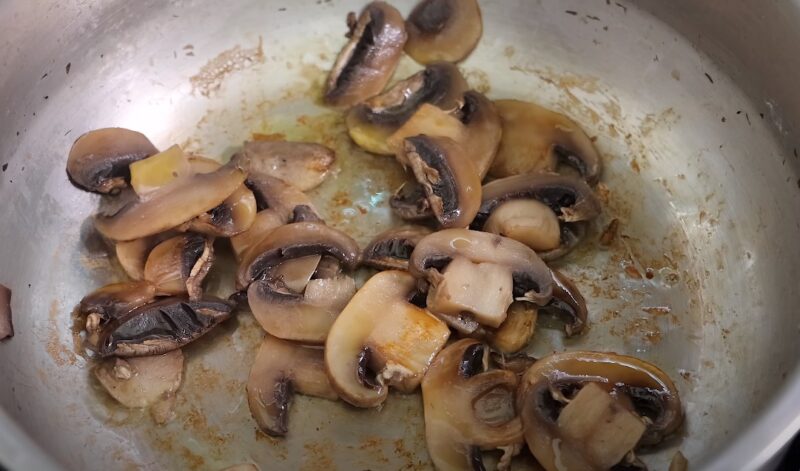
| Aspect | Raw Mushrooms | Cooked Mushrooms |
|---|---|---|
| Nutritional Value | May retain more vitamin D if sun-exposed. A tougher cell structure makes some nutrients less accessible. | Enhances the availability of nutrients like B vitamins, selenium, potassium, and phosphorus. Increases accessibility of beta-glucans for immune support. |
| Flavor and Texture | Mild, earthy flavor with a crisp texture. Suitable for salads and cold dishes. | Deep, umami flavor with a tender, meaty texture. |
| Safety and Contamination | Risk of bacterial contamination and challenges for sensitive stomachs. | Reduces bacterial contamination risk and makes mushrooms easier to digest. |
How To Safely Eat Raw Mushrooms?
- Choose Edible Varieties: Stick to well-known edible fungi like white buttons, cremini, and portobello.
- Buy from Reliable Sources: Purchase from reputable stores or grow your own to ensure quality and safety.
- Proper Storage: Store fungi in a paper bag in the refrigerator to maintain freshness.
- Thorough Cleaning: Wash mushrooms under cold running water before consumption.
- Consider Blanching: Blanching can kill bacteria without significantly altering the texture or taste.
- Be Aware of Allergies: Some people may have sensitivities to fungi, especially if they have mold allergies.
- Consult a Health Professional: If you have health concerns, consult a healthcare professional before adding raw fungi to your diet.
Cooking Tips and Techniques
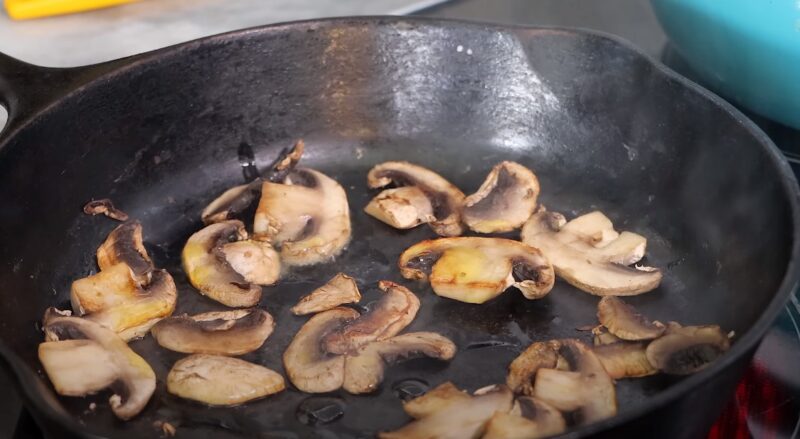
High Heat Cooking
For fleshier mushrooms, such as Portobello or Shiitake, cooking quickly at high heat is crucial. This method seals in the flavors and prevents the fungi from releasing too much water, which can make them soggy.
High heat also caramelizes the natural sugars in fungi, enhancing their umami flavor. It’s best to use a skillet or a grill for this method to achieve a nice sear on the mushrooms.
Avoid Overcrowding
When cooking fungi, give them enough space in the pan. Overcrowding leads to steaming rather than sautéing, resulting in a soggy texture. Each mushroom should touch the pan’s surface to ensure even cooking and proper browning. This technique is vital to achieve that perfect, crispy exterior and tender interior.
It’s better to cook in batches than to try to fit everything in one go.
Add Salt at the End
Adding salt towards the end of cooking mushrooms is a strategic move. Salt draws out moisture, so adding it too early can lead to waterlogged fungi. By waiting until the end, you allow the fungi to brown properly, and the salt can then enhance the flavor and create a slightly crispy edge.
This technique also helps in retaining the mushroom’s natural texture and prevents them from becoming too shriveled.
Explore Diverse Cooking Methods

Exploring different cooking methods can significantly enhance the taste and texture of fungi. Grilling imparts a smoky flavor, perfect for meaty varieties like Portobello. Sautéing in a bit of butter or oil brings out a rich flavor, ideal for varieties like cremini or button mushrooms.
Baking is excellent for a hands-off approach and works well for stuffed or marinated mushrooms. Each method brings out unique aspects of the fungi.
FAQs
Can eating raw mushrooms affect nutrient absorption in other foods?
Yes, the chitin in raw fungi can bind with certain nutrients, making them less available for absorption. This is particularly true for minerals like iron and calcium. Cooking fungi helps break down chitin, reducing this binding effect.
Are there any specific health benefits unique to raw mushrooms?
Raw fungi, particularly when exposed to sunlight, can be a good source of Vitamin D2. However, this benefit is often outweighed by the reduced digestibility and nutrient availability in raw fungi compared to cooked ones.
Can raw mushrooms be used in fermenting foods?
Yes, they can add unique flavors to fermented dishes like kimchi. However, it’s important to ensure that the fungi are properly cleaned and handled to avoid contamination.
Are there any mushrooms that are more nutritious when eaten raw?
While cooking generally enhances the nutritional value of most fungi, some varieties like Enoki mushrooms may retain higher levels of certain antioxidants when consumed raw. The overall difference is usually minimal, and the choice should be based on safety and digestibility.
How does the texture of raw mushrooms change in different dishes?
Their texture can vary significantly depending on the dish. In salads, they add a crisp, fresh texture. When used as a topping on pizzas or in sandwiches, they can provide a chewy contrast.
However, their texture is less versatile than cooked mushrooms, which can range from tender to meaty depending on the cooking method.
Summary
Not all mushrooms are suitable for raw consumption, and even those that are can have different effects on nutrient absorption and digestion. Cooking fungi generally enhances their safety, digestibility, and nutritional value.
If you choose to eat mushrooms raw, do so with caution, ensuring they are clean, fresh, and from a reliable source.

